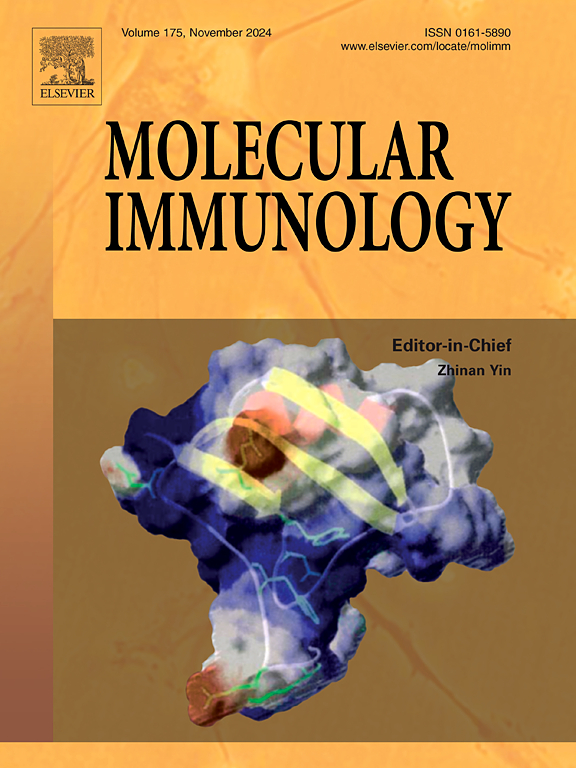黄芪甲苷对阿霉素所致肾损伤的保护作用:巨噬细胞极化和PPARγ激活的研究
IF 3
3区 医学
Q2 BIOCHEMISTRY & MOLECULAR BIOLOGY
引用次数: 0
摘要
黄芪(Astragali Radix, AR)是一种药物和食品的同源物,对慢性肾脏疾病(CKD)患者具有肾脏保护作用,已被广泛记录。黄芪甲苷(Astragaloside IV, ASIV)是AR中重要的生物活性成分之一。本研究旨在通过脂质组学和分子生物学技术的结合,探讨ASIV如何促进巨噬细胞M2极化,以及这是否有助于保护足细胞免受损伤。在体内评估asv对阿霉素(ADR)诱导的大鼠肾损伤的影响,特别强调阐明巨噬细胞的潜在参与。体外建立ADR诱导RAW264.7细胞M1极化模型。通过测量巨噬细胞M1和M2标记蛋白的表达水平及其相关mRNA谱,综合评估ASIV对adr诱导的巨噬细胞极化的影响。采用流式细胞术分析表面标记物表达,Western blot (WB)测定蛋白水平,real-time quantitative PCR (qPCR)测定基因表达。值得注意的是,我们发现被asv干预的巨噬细胞上清对足细胞损伤有保护作用,这是通过细胞粘附和凋亡实验来评估的。我们创新性地利用脂质组学方法,从脂质代谢的角度探讨了asv影响巨噬细胞极化的机制。在这一过程中,过氧化物酶体增殖激活受体γ (PPARγ)在巨噬细胞极化中的作用引起了我们的注意。该受体与脂质代谢产物密切相关,已被分子对接证实。ASIV已被证明能有效改善肾损伤,巨噬细胞在肾足细胞修复过程中起关键作用。asv使M2巨噬细胞标志物ARG-1、CD206、IL-10蛋白和mRNA表达增加,促进M2巨噬细胞极化(P <; 0.05)。此外,通过足细胞粘附实验和细胞凋亡实验发现,asv干预巨噬细胞的上清液对足细胞损伤具有保护作用。本研究提示,asv增强了巨噬细胞的M2极化,这些极化巨噬细胞的上清液对足细胞具有保护作用。从脂质代谢的角度来看,这种作用的潜在机制可能涉及鞘脂、花生四烯酸、甘油磷脂等脂质代谢产物的调节,这些代谢产物激活PPARγ受体,从而对足细胞产生保护作用。本文章由计算机程序翻译,如有差异,请以英文原文为准。
The protective role of Astragaloside IV in adriamycin-induced renal injury: A focus on macrophage polarization and PPARγ activation
Astragali Radix (AR), a homologous of medicine and food, has been extensively recorded to possess a nephroprotective impact on individuals suffering from chronic kidney disease (CKD). Astragaloside IV (ASIV) is one of the prominent bioactive constituents derived from AR. This study aimed to investigate how ASIV promotes M2 polarization of macrophages and whether this contributes to the protection of podocytes from injury, using a combination of lipidomics and molecular biology techniques.The effect of ASIV on adriamycin (ADR)-induced renal injury in rats was evaluated in vivo, with a particular emphasis on elucidating the potential involvement of macrophages. The M1 polarization model of RAW264.7 cells induced by ADR was established in vitro. The impact of ASIV on ADR-induced macrophage polarization was comprehensively assessed by measuring the expression levels of M1 and M2 macrophage marker proteins, along with their associated mRNA profiles. Flow cytometry was employed to analyze surface marker expression, while Western blot (WB) was used to quantify protein levels, and real-time quantitative PCR (qPCR) allowed for the measurement of gene expression. Notably, we found that the macrophage supernatant intervened by ASIV was found to have a protective effect against podocyte injury, which was evaluated through cell adhesion and apoptosis assays. Innovatively, we explored the mechanism by which ASIV affects macrophage polarization from the perspective of lipid metabolism, using lipidomics methods. During this process, the role of peroxisome proliferator-activated receptor gamma (PPARγ) in macrophage polarization caught our attention. This receptor is closely associated with lipid metabolites, as confirmed by molecular docking. ASIV has been shown to effectively ameliorate kidney injury, with macrophages playing a pivotal role in renal podocyte repair process. The protein and mRNA expressions of ARG-1, CD206 and IL-10, M2 macrophage markers, was increased by ASIV and M2 macrophages polarization was promoted by ASIV (P < 0.05). In addition, it was observed that the supernatant of macrophages intervened by ASIV exerts a protective effect on podocyte injury, which was confirmed through podocyte adhesion assays and cell apoptosis experiments. This study suggests that ASIV enhances the M2 polarization of macrophages, and the supernatant from these polarized macrophages has a protective effect on podocytes. From the perspective of lipid metabolism, the underlying mechanism of this effect may involve the modulation of sphingolipids, arachidonic acid, glycerophospholipids, and other lipid metabolites, which activate the receptor PPARγ, thereby exerting protective effects on podocytes.
求助全文
通过发布文献求助,成功后即可免费获取论文全文。
去求助
来源期刊

Molecular immunology
医学-免疫学
CiteScore
6.90
自引率
2.80%
发文量
324
审稿时长
50 days
期刊介绍:
Molecular Immunology publishes original articles, reviews and commentaries on all areas of immunology, with a particular focus on description of cellular, biochemical or genetic mechanisms underlying immunological phenomena. Studies on all model organisms, from invertebrates to humans, are suitable. Examples include, but are not restricted to:
Infection, autoimmunity, transplantation, immunodeficiencies, inflammation and tumor immunology
Mechanisms of induction, regulation and termination of innate and adaptive immunity
Intercellular communication, cooperation and regulation
Intracellular mechanisms of immunity (endocytosis, protein trafficking, pathogen recognition, antigen presentation, etc)
Mechanisms of action of the cells and molecules of the immune system
Structural analysis
Development of the immune system
Comparative immunology and evolution of the immune system
"Omics" studies and bioinformatics
Vaccines, biotechnology and therapeutic manipulation of the immune system (therapeutic antibodies, cytokines, cellular therapies, etc)
Technical developments.
 求助内容:
求助内容: 应助结果提醒方式:
应助结果提醒方式:


